The 6Cs of Sapphires by Brilliyond
The 4Cs of a diamond is an industry accepted practice to grade, classify, and describe diamonds. Apart from these four properties, many other factors are considered when determining the quality of sapphires. Incorporating the two major factors which are heavily used in the sapphire trade, Brilliyond introduced the 6Cs of Sapphires for the first time in the industry. The new 2Cs are the ‘Country of Origin' and ‘Curing’. As you know diamonds is a pure carbon isotope and the origin of a diamond does not make much difference to its beauty or value. On the contrary, the origin of a sapphire gives a very strong signal of its quality and characteristics. Curing is collectively referring to a number of treatments such as heating which is carried out to enhance the appearance and the quality of the sapphire. We will discuss each of these in details in a series of blog post.
The 6Cs of Sapphires by Brilliyond - C1.Colour
Sapphire colour is very interesting but a very controversial subject. It is very difficult to have an industry standard because of the complexity of the subject. Unlike diamonds, the sapphire trade is not monopolized so that is also contributing to the lack of consensus. Here, we are presenting the most important aspects of the colour of sapphire, and this is more than adequate to make a very informed sapphire engagement ring purchase.
The sapphire colour quality can be analysed based on three distinct but related properties, hue, tone, and saturation.
C1.1.Tone – Light or Dark
Tone describes how light or dark the colour is with the range going from very light to very dark. If you were to compare a baby blue sapphire to a royal blue sapphire, you would be able to say that the hue or colour is the same but that the tone or the depth of the colour is different. The baby blue sapphire will appear "lighter" while the royal blue sapphire will appear "darker". In the simplest of terms, the tone of a blue sapphire describes the relative lightness or darkness of its colour.
The preferred tones for sapphires vary from hue to hue, but most fine sapphires have a medium to medium-dark tone. Sapphires that have a very dark tone are often described as “inky.”
C1.2.Saturation
Saturation of a sapphire describes how vibrant the colour is with the range going from dull/weak to pure vivid. Sapphires with the highest levels of saturation display the cleanest and truest colours. These are referred to as having "vivid" saturation. The closer to pure vivid the sapphire’s colour is, the higher is its demand and market value.
The most desirable sapphires will have vivid, highly saturated colour without areas of brown or grey areas known as "extinction". Usually the darker the sapphire's colour, the darker the extinction will be as well. The ideal blue sapphire saturation should be as strong as possible but without darkening the colour and compromising the gem's brightness.
Because of the lack of uniformity in grading a sapphire gemstone colour, you will have to use your own judgment about which colours appear vibrant and alive to you. Of course, the better the sapphire’s colour, with the optimum tone and saturation, the higher the price tag will usually be.
This discussion of the Sapphire colour is mainly about blue sapphires. Sapphires are available in many colours. Blue sapphires are the most expensive of all due to the rarity and some historic reasons. We believe that other colours are equally beautiful. Even you do not see your favourite colour in your jeweller’s catalogue, ask them whether they can source a gemstone for you, or simply choose someone who offers that colour. You can get blue, pink, white, yellow, purple, green, orange, red (also called ruby), padparadscha (rare and a unique colour), black, and the list goes on and on.
C1.3.Hue - Which Blue is ‘THE Blue’?
Even you know that you need a Blue Sapphire Engagement Ring, do you know which blue you want? Don’t settle for any ‘Blue’. Often customers are presented with whatever the stones the jeweller posses. There can be a huge price difference just because of the hue of the gemstone. Thus your local jeweller might not have the best stones in the inventory. Even the top five fine jewellers in Australia sells sapphire jewellery in different hues, purely because they want to meet everyone's budget.
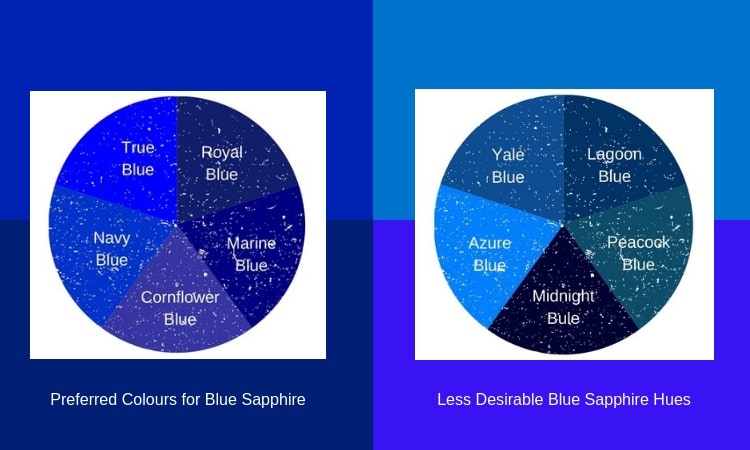
Sapphires have a very wide colour spectrum.
The best gemstones do not go along the general supply chain of those average stones. There is always somebody who is ready to pay a higher price for a truly remarkable Sapphire. Best sapphires could cost you a fortune. I know right now you are thinking about Princess Diana’s engagement ring. Princess Diana’s 1981 engagement ring is a good example of the timeless value of the sapphire stone. Almost after thirty years, Prince William proposed to Kate with the same ring.
Since the hue alone will not determine the price, a sapphire with an undesired hue could be well worth if its other properties are excellent. So, there are no hard and fast rules here.
Ask your jeweller about the Sapphire colour. If most of the gemstones in his showcase does not fall into the preferred colour range, you may not in the right place. If you buy online, ask colour information and photographs of the gemstones before you buy. Even the most popular online jewellery retailers sell sapphire jewellery in less desired colours. Every beautiful Sapphire has a value. But we encourage you to educate yourself more so that you will not settle for less.
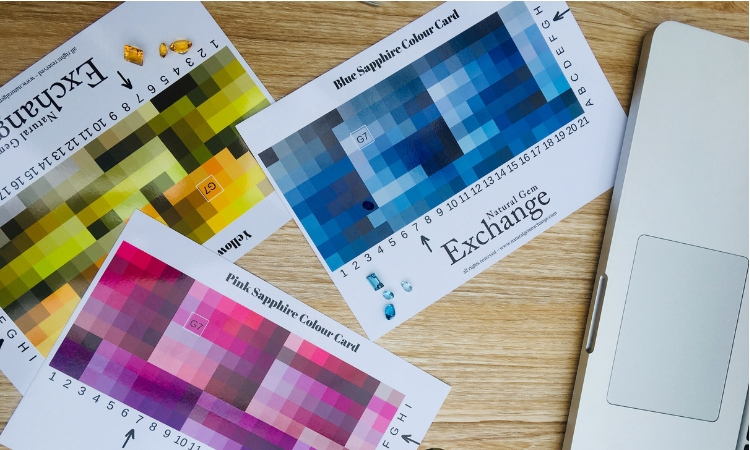
Contact us to order these colour sheets. (Natural Gem Exchange is a sister company of Brilliyond)
The 6Cs of Sapphires by Brilliyond - C2.Clarity
Sapphire clarity is another essential determining factor that has a major impact on a sapphire's price and value. Because sapphire forms in an environment that is rich in trace minerals, it is not surprising that some of these minerals can easily become trapped within the gemstone. These inclusions can, if visible to the naked eye, or make an uneven distribution of colour will degrade the value of the sapphire and if they do a unique formation called sapphire silk can give additional velvety lustre to the gemstone.
If a stone does not have any visible inclusions under 10X, 15X, or even 20X magnification, they are considered very valuable. The inclusions play a very important role in distinguishing natural sapphires and lab-created sapphires. Also, an experienced gemologist can find the country of origin based on the type of inclusions.
The 6Cs of Sapphires by Brilliyond - C3.Cut
Unlike diamonds, sapphires do not come with standard cuts as well as there are no "ideal" cuts for sapphires, as each individual sapphire crystal must be custom cut to help the finished gemstone display the best colour and brilliance. However, a sapphire's cut plays an essential role in determining its value and appeal. With precise and skilled cutting, one can unravel the mesmerising brilliance and beautiful colour of the gemstone, bringing out the unique personality and charm of a sapphire.
Most of the time, a custom cut is done to retain the sapphire properties at their best. For example, sapphires exhibiting a lighter tone of colour will be cut deeper to add dimension and intensity to the colour while a sapphire of very dark colour will likely be cut shallower to allow additional light to reflect within the gemstone that will soften and brighten the sapphire’s colour.
The ideal cut for a diamond is the brilliant cut, and the size of various measurements should be proportional. Thus, you get the ideal brilliance from the diamond. Sapphires do not have a specific cut. Most jewellers use the term ‘sapphire cut’ or ‘mixed cut’ when specifying the cut of a sapphire gemstone. This is because the proportions for each individual sapphire is determined by a gem cutting professional in a way that it maximizes the beauty and appearance of the gemstone. Depending on the other properties of the gemstone even a shallow cut or a deep cut could be used. Unlike in diamonds, this makes the diameter to weight ratio change from stone to stone. Whereas a 5mm round diamond should weight half a carat, a 5mm round sapphires can be found in a range of weight.
The 6Cs of Sapphires by Brilliyond - C4.Carat
A carat is a unit of measuring weight equivalent to one fifth (.2) of a gram. One-hundredth of a carat is called a point “pt”. A rule of thumb is that a one-carat sapphire generally measures 6mm. As with any gem, per carat prices increase with overall carat weight. Excellent quality sapphires are mostly available under two carats, but they can also be found in much bigger sizes.
Sapphire and diamond have different density and composition, so even if the two have the same carat weight they will be visually in varied sizes. Sapphires are heavier, so a one-carat sapphire is usually slightly smaller in size than a one-carat diamond.
We suggest that you go beyond 1ct because the value of a sapphire stone will significantly increase when it is 1ct or bigger.
The 6Cs of Sapphires by Brilliyond - C5.Country of Origin
Many top jewellers always mention the source of their sapphires. The Ceylon sapphire is the top in the demand and the Madagascar sapphires are also getting popular. Once famous Kashmir sapphires are not mined any more and anybody who claims they sell them could be suspicious.
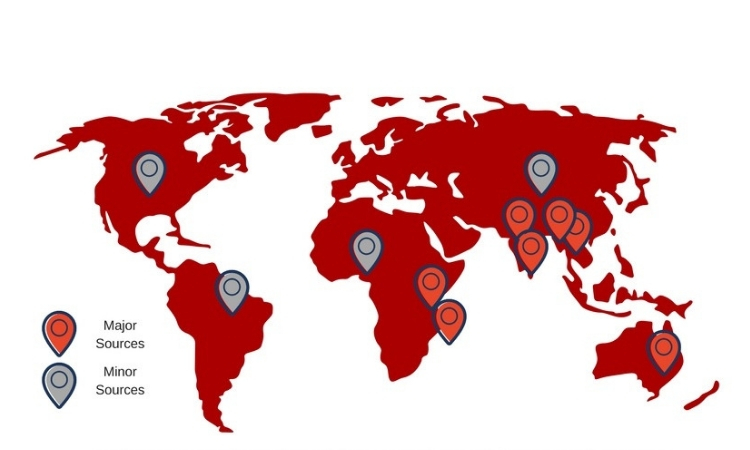
Sapphires are rarer than Diamonds.
Are you Ethical Conscious?
There are blood diamonds, but as far as we know there are no blood sapphires unless you are referring to the colour of a red sapphire (ruby) gemstone. Environmental pollution and labour exploitation could be present in sapphire mining operations. However, countries like Sri Lanka (historically known as Ceylon where the Ceylon sapphires are coming from) is knows for their ethical mining practices and they were doing this from as early as 600 BC without any serious environmental impact. In 2011, Sri Lanka banned the use of heavy machineries such as backhoes for mining operations and strict government regulations and licensing processes are in place to prevent environmental hazards.
On the contrary, the countries such as Madagascar which has become one of the major sapphires suppliers during the last two decades has a different story to tell.

These valleys of Ceylon are rich in sapphires.
The 6Cs of Sapphires by Brilliyond - C6.Curing
The vast majority of sapphires are cured, healed, or treated to remove deficiencies and increase the qualities. The most common technique of curing is heat treatments. Heating is the process of exposing the gemstone to the same conditions in nature in a very short time. During this process, transformations which take thousands of years could be achieved in a few hours or days. Majority of Sapphires in the market are heat treated.
However, there is a niche demand for unheated/untreated natural sapphires. Technically it is very difficult to 100% conclude that a gemstone is not heated. Thus, trust in the industry plays a great role in supplying natural unheated sapphires.
Heating is purely done to increase the colour of the gemstone. However, it could destroy some impurities inside the stone and make the gemstone more clear and saturated. Any curing technique other than heating is not desirable since they are focusing on hiding or healing the defects found in a gemstone.
For more information please order our free guide, "Buying a Sapphire Engagement Ring - A Definitive Guide"
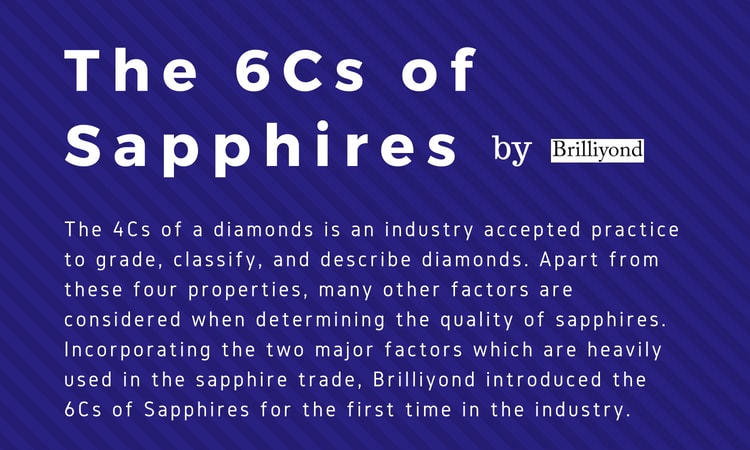


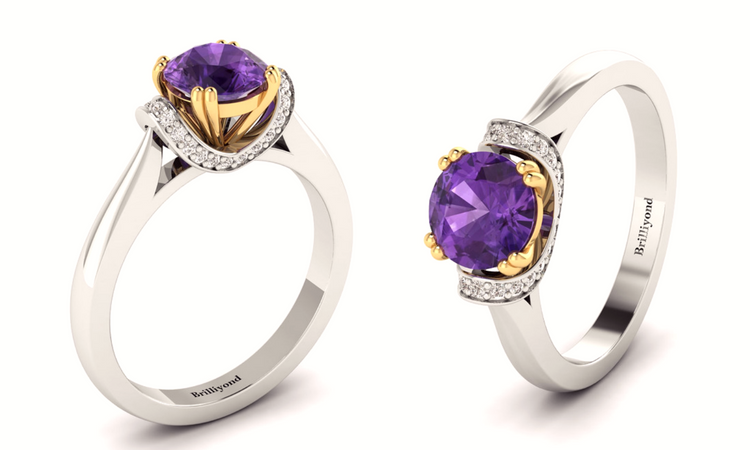
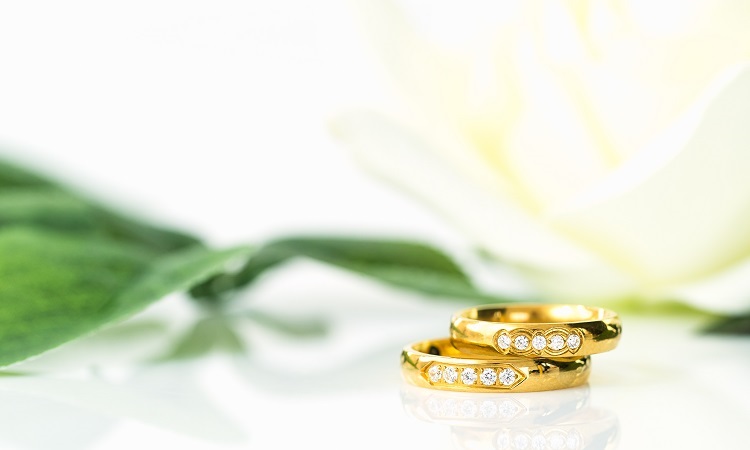
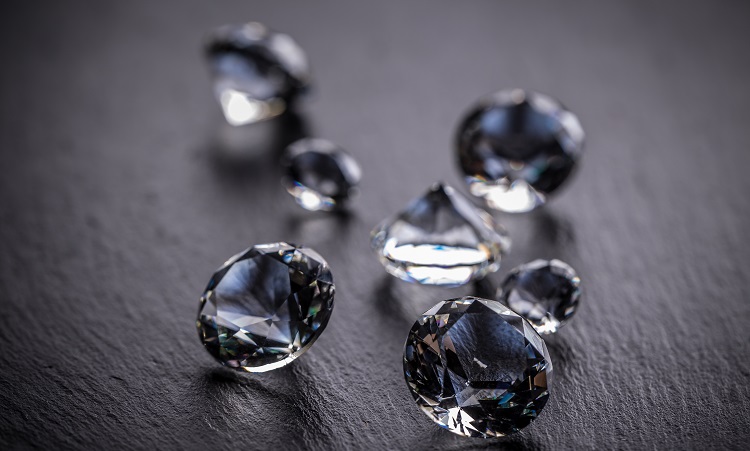


Comments (0)
Write your review